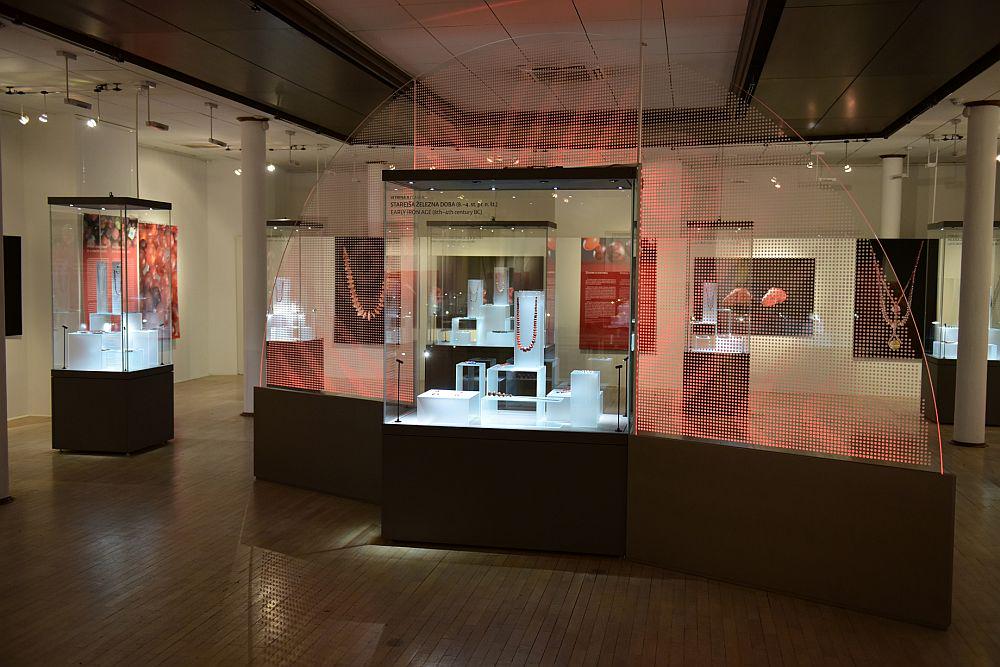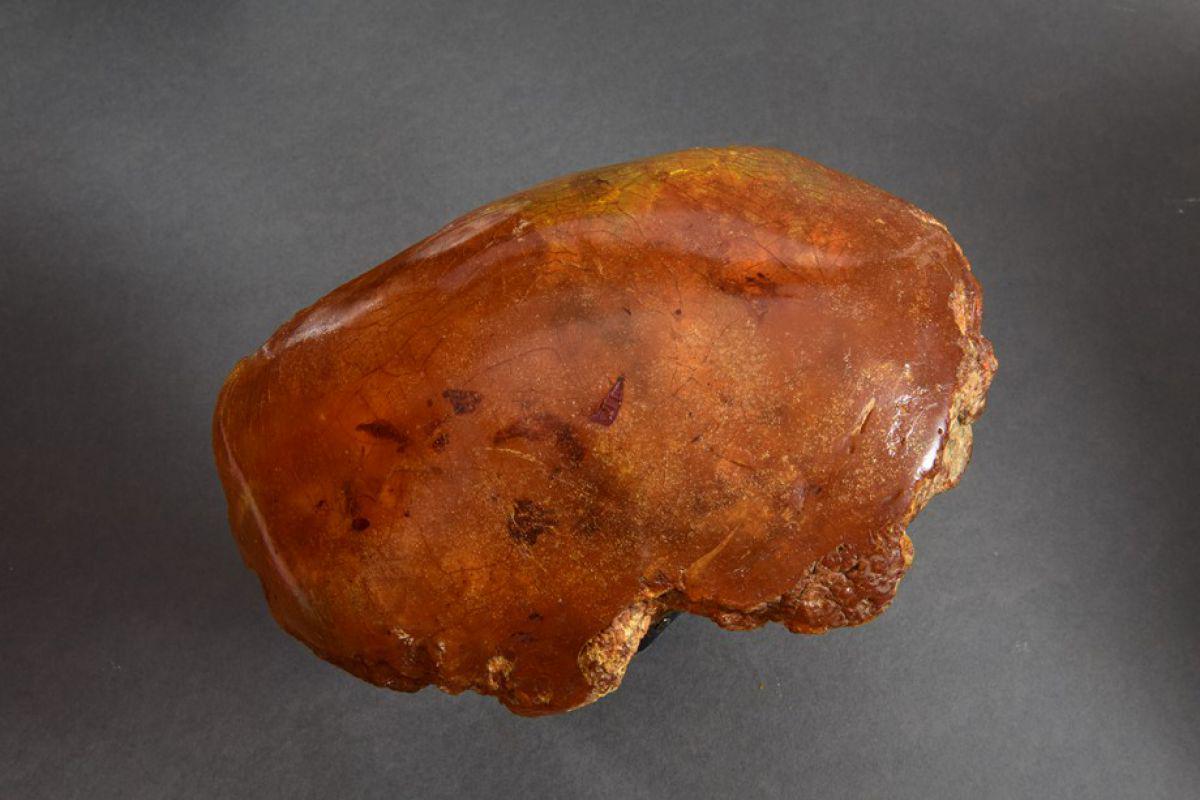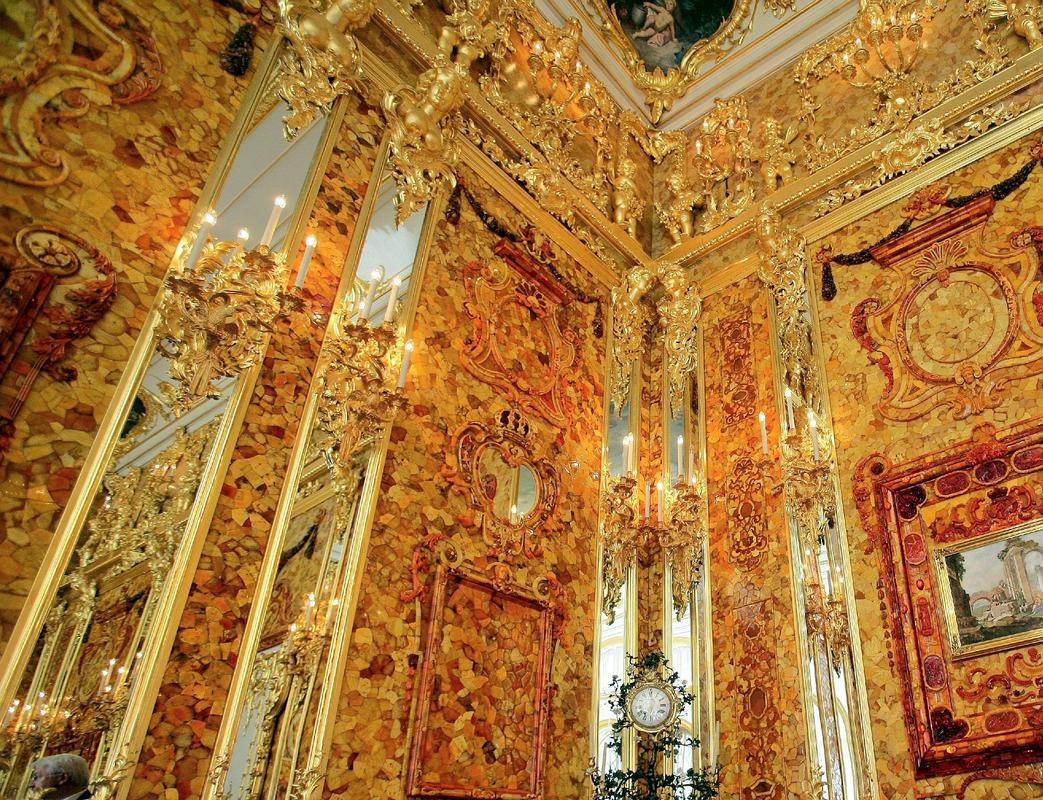



International conferences on amber and amber routes in Europe have been taking place for a number of years, organised by the San Marino-based International Research Centre for the Ancient Roads and the Ways of Communication among the Peoples (CIVIA). In 2017 a CIVIA conference was held in Novo mesto for the first time. Participants included experts from around Europe (including Slovenia) who study amber and related artefacts from all periods. The second conference, which took place as a continuation of the international archaeological conference on amber and was organised by the City Municipality of Novo mesto, was the Conference of Cities on the Amber Road, dedicated to the connections among cities lying between the Baltic and Adriatic, with an emphasis on cultural and industrial tourism.
The City Municipality of Novo mesto has proclaimed 2017 as Amber Year. Orange-red amber, held to symbolise the sun and spiritual connection, carries in itself something mystical, and for at least 7,000 years has been considered a healing stone and amulet, and is today still seen as having special powers. This magical substance was transported along the Amber Road, which was not only a route along which material goods passed in both directions, but also severed as a forum on which ideas, science, knowledge and concepts were exchanged – along with sociological models, beliefs and traditions.
Glassmaking and ironmaking were the two activities that permitted the Dolenjska region to flourish in the first millennium BC. The settlement that later grew into Novo mesto was an important commercial centre in the past, and thanks to its extensive deposits of iron ore was able to trade successfully with many other peoples. The items it received in exchange included amber artefacts transported along the Amber Road.
Novo mesto still has a highly-developed economy, and is one of the most important commercial centres in Slovenia. As Jasna Dokl Osolnik, director of the Dolenjska Museum in the city, puts it: “Economic development has a positive influence on culture, sport and quality of life. Of course, the Amber Year also represents an opportunity for the city to promote its heritage and tourism. Above all, it is a further step towards one of our main goals: the creation of an archaeological park where it will be possible to satisfy several needs in one place – from education to recreation and socialising, something for all generations.”
The Dolenjska Museum has a remarkable archaeological collection from prehistoric times, including numerous objects found in the area around Novo mesto. The most important finds are iron and bronze artefacts, glass beads of various colours, and amberware. Necklaces of locally made, richly decorated glass beads, interspersed with ornate orange-red beads of amber, as found in Novo mesto’s ancient burial sites, served as an additional inspiration for the presentation of this rich cultural heritage to visitors from home and abroad.
"Amber – Jewels of the Baltic in Novo mesto" exhibition
The Dolenjska Museum in Novo mesto has prepared three amber-themed exhibitions for Amber Year, which will be on view from 20 April to 30 September 2017. These include an exhibition of 190 amber artefacts from the Dolenjska Museum and other institutions in Slovenia – collected here for the first time; an exhibition on the Amber Room in St Petersburg (famously used by Catherine the Great); and an exhibition of modern amber products from Gdansk, which will include workshops by Polish designers of amber jewellery.
The richest and most important exhibition, called “Amber – Jewels of the Baltic in Novo mesto,” has been put together by the archaeologist Borut Križ. As well as prehistoric amber artefacts it includes some remarkable examples of amberware produced in Slovenia in Late Antiquity, and pieces of raw Baltic amber. To date, all the amber items found in Slovenia and subjected to analysis have been shown to be made of Baltic amber, which is further proof that the territory of present-day Slovenia was involved in the amber trade. Borut Križ explains that the pieces in the exhibition cover a period ranging from the 12th century BC (the oldest amber artefact so far found in in the country dates from this time) to the 3rd century AD (the start of the decline of the Roman Empire). The exhibition includes almost 200 amber artefacts of the highest quality from all over Slovenia, many of them presented to the general public for the first time. Pride of place goes to amber necklaces consisting of amber beads of different shapes and sizes. These range from just a few millimetres to almost five centimetres in size. They can be spherical, prismatic, oval or flat, and those made in the shape of animal heads are a particularly interesting variant. The beads are decorated with engraved circles and lines, and are drilled through and carved in a variety of ways. Also notable is a remarkable bronze needle with a rich amber coating. Among the ancient items, amber medallions decorated with figures and massive rings, also decorated with figures, draw particular interest.
The team at the Dolenjska Museum are convinced that the wealth of archaeological finds made of amber will surprise many visitors, particularly those from traditional “amber areas.” The exhibition will also strengthen international ties, thanks to Polish and Russian participation.
However, amber is not the only reason to make a visit to the museum. As Jasna Dokl Osolnik notes, “As well as our current amber-themed exhibitions, the Dolenjska Museum can boast seven permanent exhibitions and numerous temporary exhibitions. Foreign visitors in particular are always surprised that such a small city contains such remarkable riches and heritage. Perhaps most significantly, of the forty decorated situlae (bronze pails) found in archaeological digs around the world, eight are on view at our museum. That is why Novo mesto officially has the title “City of Situlae.”.
Numerous other events connected to amber will be taking place in Novo mesto throughout the year, and more information can be obtained at visitnovomesto.si.
Danila Golob, Sinfo
International conferences on amber and amber routes in Europe have been taking place for a number of years, organised by the San Marino-based International Research Centre for the Ancient Roads and the Ways of Communication among the Peoples (CIVIA). In 2017 a CIVIA conference was held in Novo mesto for the first time. Participants included experts from around Europe (including Slovenia) who study amber and related artefacts from all periods. The second conference, which took place as a continuation of the international archaeological conference on amber and was organised by the City Municipality of Novo mesto, was the Conference of Cities on the Amber Road, dedicated to the connections among cities lying between the Baltic and Adriatic, with an emphasis on cultural and industrial tourism.

































































